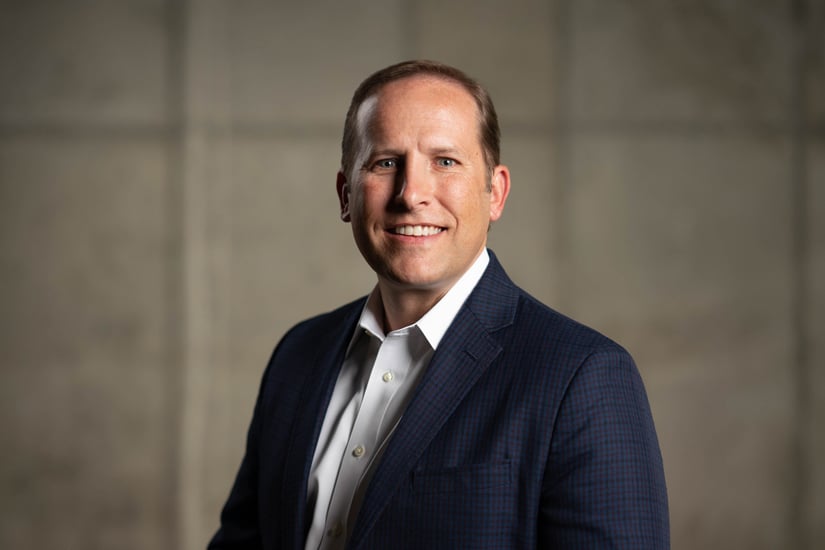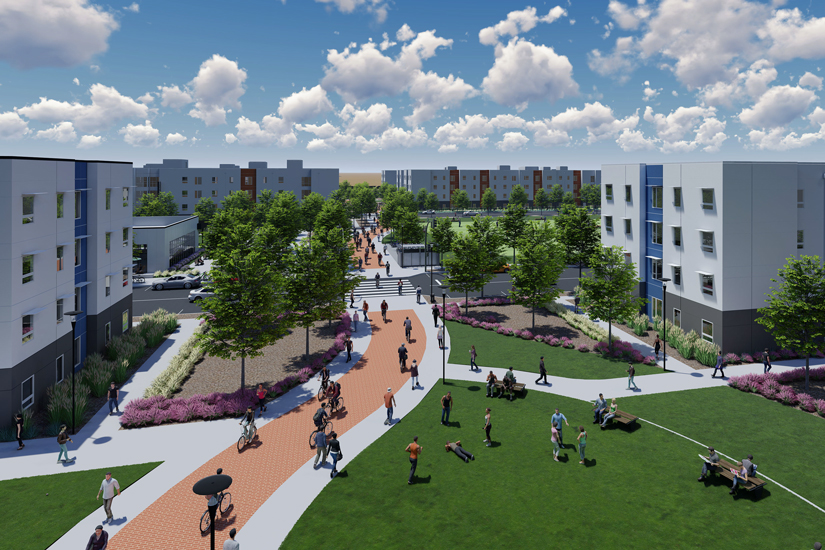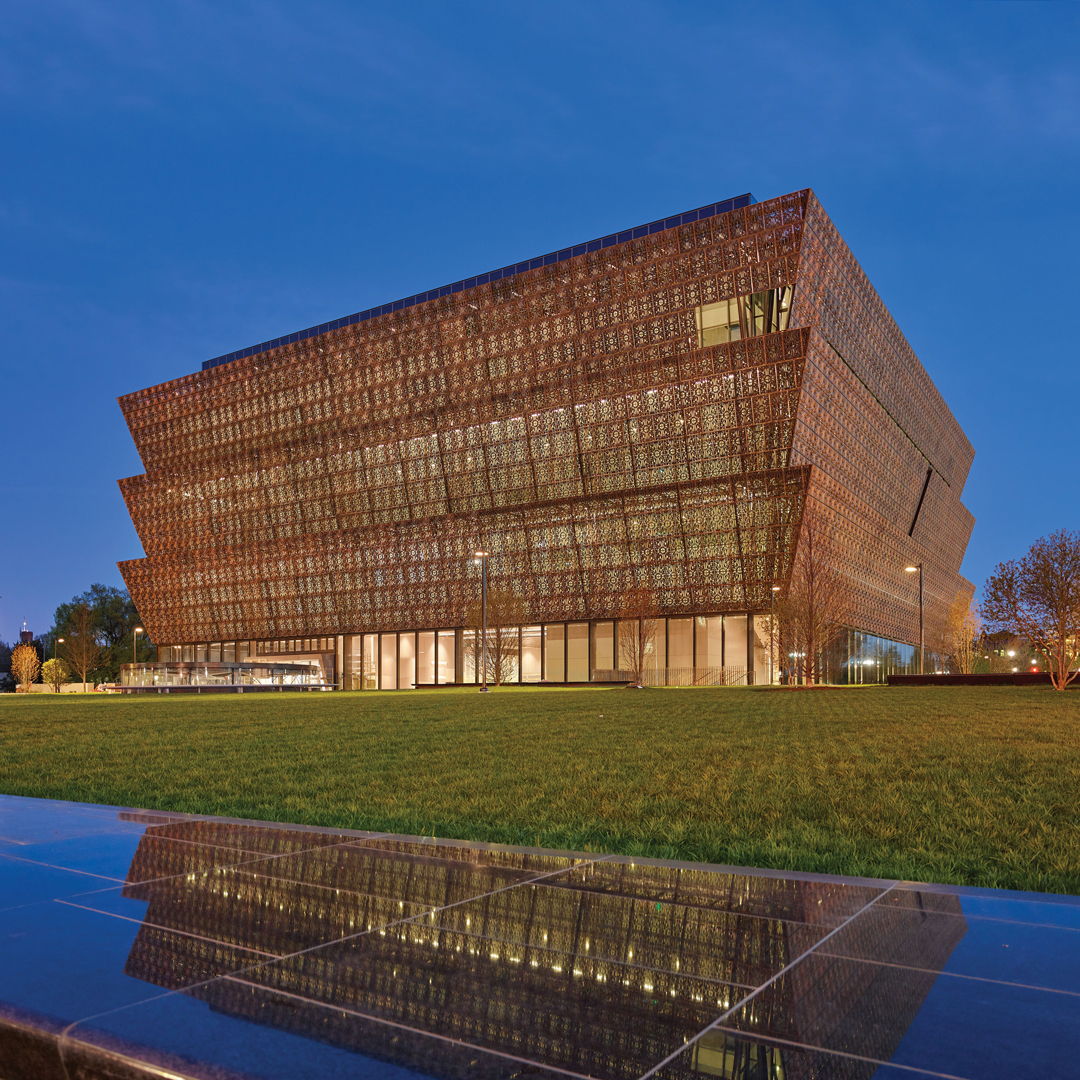|
Getting your Trinity Audio player ready...
|
As a kid, Prescient’s Todd Meckley used to play with what was called an Erector Set. A popular toy made up of various metal beams with regularly spaced holes for assembly using nuts and bolts, Meckley remembers, “You could build whatever you could dream of.”
Prescient is a bit like that. Multiple components, multiple reconfigurations using a highly standardized kit of parts. As its executive vice president of design and business development, Meckley understands the complex process of selling, designing, engineering, manufacturing, and installing its unique system, as well as the many hands that push the process along.

Growing up, his family owned an engineering firm and construction company. He did not necessarily shift to architecture to avoid stepping on anyone’s toes but to round off the family business. “My interest was always more in design,” he says, “but having a family-owned construction company, you learn structure, you learn discipline, and you learn process.”
More than 20 years later, Meckley started his own architectural office, sold it to a national firm, then went on to become a senior partner and sit on the board of directors there.
“It was during that shift [after selling the firm] that I got engaged with Prescient,” Meckley points out. “I was at an Interface student housing conference in Austin, Texas, and one of their business development/sales guys brought me over to an active construction project.” After speaking with the GC and various subcontractors on the jobsite, the innovative approach using 5-D BIM (3-D BIM, schedule optimization, and cost estimating) launched the architect’s relationship with Prescient before even joining the team.

Prescient’s digital design-build pre-engineered system is an efficient, integrated, and transparent approach for professionals who plan, design, and build multifamily, federal housing, and hospitality structures, including seismic regions. Anchored in progressive technologies, the system links standardized architectural design, automated structural engineering, precise manufacturing, and rapid onsite assembly along a single digital thread.
Where it was strong in engineering, however, it lacked in other parts of the business model. So, when Meckley was brought on in 2018 he hired more architectural industry professionals and strengthened ties with developers, many of whom he’d worked with in his 20-plus years in the industry. By widening Prescient’s focus, the company expanded its services and provided a less fragmented building process for its clients.
“Everybody is looking for that silver bullet. Everyone wants the collaborative effort, the offsite manufacturing, the prefabrication, the modularity—there’s so many names for it,” Meckley says. “Everyone’s just looking for a better solution that has less fragmentation, improved coordination, and higher predictability of cost and schedule.”
In the United States, Meckley believes the industry is far too fragmented, so he looks to Europe for better solutions. Overseas, the developers, builders, and engineers are often vertically integrated under a single company umbrella. This approach streamlines the decision-making and mitigates faulty communication. At Prescient, carving out space for designers, engineers, and developers within company walls thereby provides collaboration to drive integrated product delivery. What that means for Meckley is more project stakeholders at the table earlier in the process to unify the focus and lock down critical decisions as early as possible.

“The goal is to deliver something that eliminates waste and reduces cost, time, and risk at every stage for all parties,” Meckley explains, “[which means] we are engaged in some markets even before the building is conceived.”
He sits down with clients as early as the pre-concept phase and provides a coordinated road map of the project’s timeline anchored in their proprietary system. Together with varied skill sets, his teams then design, engineer, estimate, manufacture, transport, and install the complete building superstructure. “That’s what advanced Design-Bid-Build delivery is all about,” he says. “Everybody’s a stakeholder, all the team members. The culture, the contracts, the technology, and the lean operating systems all come together to allow one coordinated delivery method.”
This kind of industry disruption is unprecedented. As Meckley put it, “It’s a 360-degree approach to design-bid-build for us.”
Prescient’s partners are pleased with the result. “VP Engineering is proud to be part of a collaborative process that brings everyone together early and often. The continuously iterative design process required to develop construction documents for a Prescient structural system promotes constant communication,” says Dino Pappas, vice president of production and principal at VP Engineering. “Todd and the Prescient team have pushed the industry forward by reimagining what it means to provide an integrated building design for construction.”
Prescient’s recent projects are some of the most coordinated buildings in company history. “The speed and accuracy of our system along with our integrated design and coordination services are huge opportunities,” Meckley reflects. In Atlanta, Georgia, they recently completed the superstructure assembly, above podium, for a 17-story tower at a rate of over 23,000 square feet per week with only 28 employees.

Making the right decisions at the right times requires the perspectives of many. In a traditionally fragmented system, developers, architects, and engineers often make decisions in silos, which ultimately slows production and stretches the budget thin. To optimize costs before production is given the green light, Meckley discusses financials and market fundamentals early on while coordinating the project.
“Cost drives everything,” Meckley says. He aims to deliver the best-looking projects and the best client experiences at the lowest costs. “Standardization and pricing predictability at Prescient are massive advantages . . . because we can predict that number early and often.”
Without defragmenting the project timeline from the get-go, however, it’s nearly impossible to get a realistic snapshot of how the building should function and how much it will cost. It takes disrupting an established business model, fortifying a new process, and putting in the work.
When he imagines the future, he only sees growth. Since Meckley joined in 2019, the company has now engaged 75 to 80 percent of its projects as early as the schematic design phase. “We look at our business like the iPhone,” he says. “We’re on Version 11, and next year we’ll be on Version 12. Over time we are improving our process, developing more innovative product adjacencies and adopting greater integration with our system to provide a greater customer experience on all fronts. It’s getting better every year.”


